COVID-19 is acting as an accelerant for instability and unrest worldwide. From armed groups killing civilians to enforce lockdowns in Colombia, to jihadi violence against children in Burkina Faso, the pandemic is worsening violence globally.
To address this threat, U.S. officials are writing America’s first global fragility strategy, due to Congress in mid-September, which will guide how the United States uses diplomacy and foreign assistance to reduce violence and help stabilize selected countries. Required by the 2019 Global Fragility Act (GFA), the strategy is an opportunity to prevent violence and the underlying fragility that enables it in a manner that postures America to secure its interests in conflict-affected countries as well as compete with its geopolitical rivals.
U.S. Secretary of State Michael Pompeo told the Senate Foreign Relations Committee (SFRC) at a July 30 hearing that he was underwhelmed by the first draft of the strategy. The secretary said that “there wasn’t much that was original in there” and that he “asked the team to go back and take a set of fresh looks.” Here, we offer such a “fresh look” and show why and how the United States must invest in and partner with civil society if the strategy is to be effective.
Civil society organizations are on the frontlines of addressing fragility
In fragile and conflict-affected countries, governments often fail to enact policies that are effective or that the citizenry perceives to be legitimate. Leaders can exploit state institutions to expand their financial and political power. These dynamics exacerbate underlying causes of fragility and can lead to armed violence.
Fragility and armed conflict are inherently political, and so solutions must be structured accordingly. Pressuring elites to forsake violence or helping address structural causes of fragility are necessary but not sufficient. Communities must be empowered to devise conflict mitigation measures that address local risks. And officials and communities need ways to communicate, peacefully disagree, and work together on shared challenges to stability.
Supporting formal political institutions is not enough to meet these needs. A robust civil society is essential. Democratic activists and community-based organizations help hold leaders accountable as well as connect citizens with their government, while local groups have closer insights into the causes of discontent and can address violence risks in real time. It is well-established that civil society actors can play a constructive role in conflict prevention and resolution. This is why the United Kingdom, Netherlands, and other OECD countries have made working with and through civil society a central component of their policy to address fragility.
From Sudan to Myanmar, civil society actors are on the frontlines of addressing fragility. Across East Africa, civil society groups are working to ensure that people in communities at risk for violence and extremist recruitment have accurate information and digital tools to combat disinformation and counter harmful narratives. By being able to fact-check and defuse rumors in real time, communities are better able to manage tensions. In Bangladesh, civil society has been a critical link between marginalized communities and government during times of crisis. In Iraq, civil society organizations frustrated with the government’s COVID-19 response carried out public perception surveys to help the government better understand and address local challenges.
If the global fragility strategy is to be effective, it must make good on the GFA’s mandate for the U.S. government to meaningfully partner with civil society. This includes: 1) applying foreign assistance to support civil society actors so they may fulfill their critical watchdog and local conflict mitigation roles, and 2) empowering these organizations to help design and implement country-specific plans that flow down from the strategy.
As Senator Chris Coons said during the recent SFRC hearing, the strategy cannot be “old wine in a new bottle.” To that end, we provide six recommendations rooted in our organizations’ decades of experience in reducing conflict, supporting democratic governance and rights worldwide, and developing research evidence on effective foreign assistance.
Focus foreign assistance
Over the next 10 years, the global fragility strategy will guide $1.1 billion in U.S. foreign assistance. As required by the GFA, a significant portion of this funding must go to “participatory, locally led programs” empowering civil society to address fragility and mitigate violence risks, which should be tackled in three ways:
- Support civil society to hold their governments accountable. The U.S. Agency for International Development’s (USAID) newly stood-up Bureau for Conflict Prevention and Stabilization and the State Department should prioritize resourcing essential civilian oversight efforts. This includes direct funding for civil society organizations, transparency activists, and watchdog groups and for regular platforms for inclusive citizen-government dialogue. This also includes ensuring that they have the right digital access, tools, and protections to continue operating amidst coronavirus restrictions. These types of programs have the added and equally important benefit of making recipient countries more resilient to Chinese and Russian malign influence.
- Strengthen the professionalization of local civil society. In fragile environments, well-intentioned donors often flood groups with funding for specific projects without investing in the capacity or sustainability of the organization beyond the project itself. This can have the unintended, pernicious effect of making local organizations operate like government contractors instead of as independent civil society designing and prioritizing their own locally-informed interventions. To enable true partnership and local ownership, the United States should ensure that direct funding to civil society groups includes investments in the development and survival of the organization, including financing and technical assistance for personnel, procurement, and operations. In many countries, donors end up supporting the same roster of elite capitals-based organizations. The GFA requires diverse consultation and presents an opportunity for the United States to cultivate new partnerships, including with women and youth-led organizations, social movements, indigenous groups, and other communities.
- Invest in local solutions to local conflicts. Evidence shows that the most effective and durable local conflict prevention efforts are those that put the communities themselves in the driver’s seat. The GFA recognizes this and requires local leadership and mutual accountability between governments and civic groups. USAID and State can build on existing successful models for cooperation. For example, civil society organizations in Uganda formed community-level resilience action committees to develop action plans and proposals they then presented to government officials during the annual budget cycle. By aggregating and elevating local concerns, the resilience action committees ensured that government funding decisions were rooted in community needs.
Meaningfully engage and empower civil society actors
Guided by the global fragility strategy, the U.S. will develop and implement country-specific plans to prevent or stabilize violent conflict. The GFA requires the U.S. government to consult with civil society actors and “ensure local leadership of strategies, policy, and programs, as well as mutual accountability for results” of the strategy. The U.S. can do three things to get this and broader strategy implementation right.
- Meaningfully consult civil society when formulating inclusive country plans. If country fragility strategies are to be realistic and sustainable, the people whose lives are most affected cannot be an afterthought. The GFA requires civil society consultation in the development of country plans. Diplomats and partner governments should honor the intent of the law and commit to regular, public, inclusive stakeholder consultations, include representatives from civil society in drafting committees (and be transparent about recruitment and selection criteria), translate drafts and plans into multiple local languages, document and publish recommendations received from civil society, and provide clarity on why certain recommendations are accepted or not.
- Build in civil society oversight. Per the law, every country plan should require ongoing civil society engagement and oversight. In practice, this could take the form of national civil society advisory councils with diverse representation, requiring quarterly public meetings between government officials with local groups on the country plan progress, or opening government fragility task forces to include civil society representatives. These mechanisms cannot be ceremonial and must provide real opportunities for citizens to influence strategy implementation.
- Leverage diplomatic influence to open the door for civil society. The global fragility strategy cannot succeed as a standalone initiative and must be underpinned by strong U.S. diplomatic commitment. In practice, this means ensuring collaboration and alignment of policy and programs across U.S. government foreign affairs agencies as well as ensuring coordination on this issue with like-minded Western nations. It also means prioritizing rights and inclusion in trade and security negotiations with host countries and supporting national policy reforms that address grievances and increase transparency. The U.S. should also work with governments on their legal frameworks to ensure protections for transparency activists and human rights defenders, and ensure that civil society groups can safely speak out or receive U.S. funding without fear of arrest or retaliation.
To be effective, the global fragility strategy must squarely address the political aspect of fragility and have a clear goal and theory of success. Forming a new type of partnership that prioritizes collaboration with local communities and empowers civil society leaders must be the heart of this new initiative.
The Brookings Institution is committed to quality, independence, and impact.
We are supported by a diverse array of funders. In line with our values and policies, each Brookings publication represents the sole views of its author(s).
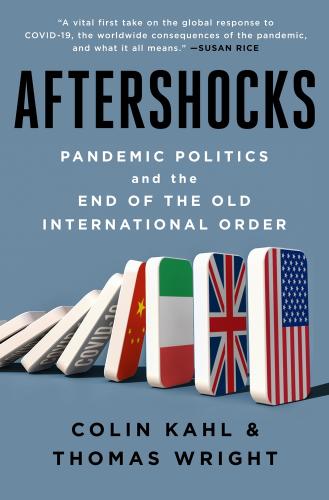
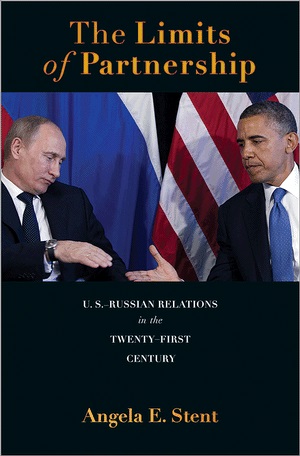
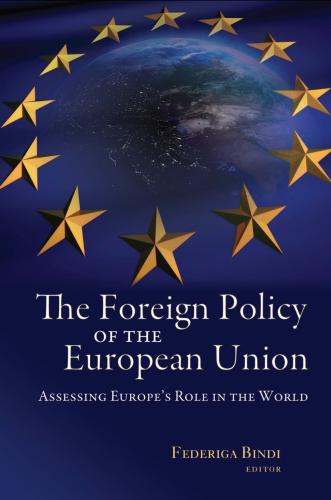
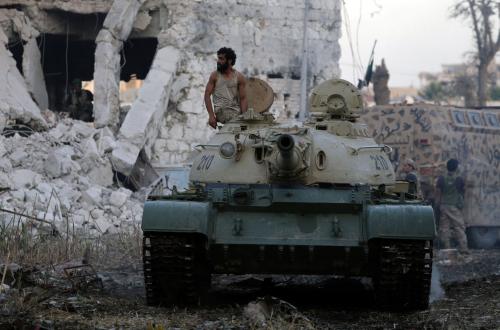
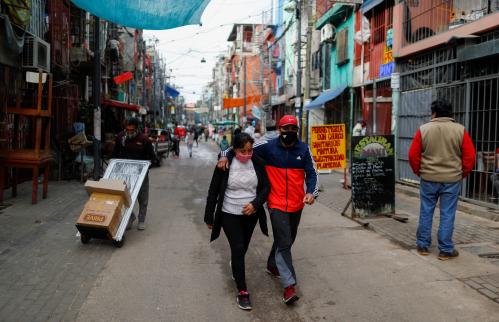
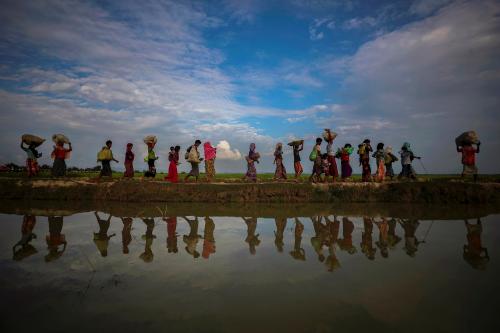
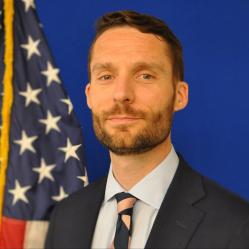
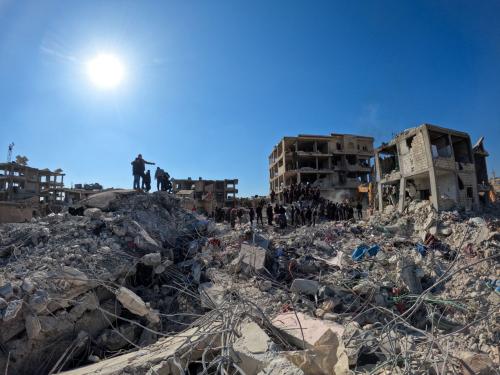
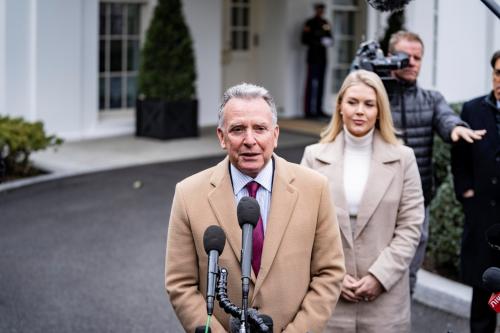
Commentary
Want to reduce global fragility? Empower civil society
August 11, 2020